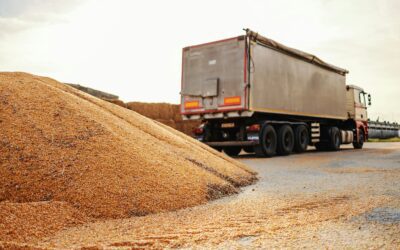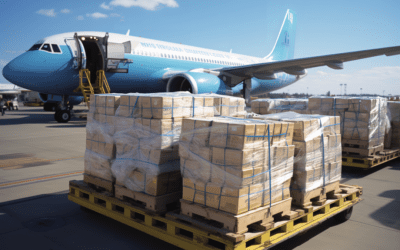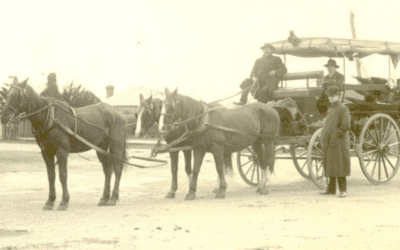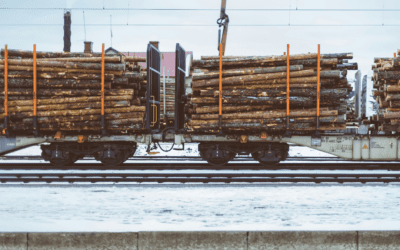The United States, a global leader in the manufacturing of construction machinery, houses companies like Caterpillar and John Deere, which collectively contribute to 21.7% of the global construction equipment market revenue. The industry has a wide array of heavy-duty equipment, including excavators, backhoes, bulldozers, and loaders, all integral to grading, scraping, and earth-moving operations. Despite the industry’s significant advancements, the task of heavy equipment hauling presents a unique set of challenges that require innovative solutions.
The transportation of heavy equipment poses significant challenges in the construction industry. Notably, construction machinery was the leading cause of fatal collisions from 1992 to 2010. In 2010, the rate of vehicle accidents on road construction sites doubled the total number of injuries recorded across the entire construction industry. This trend underscores the urgent need for improved safety measures in the hauling of heavy equipment.
The importance of preparing shipments to mitigate challenges
Hauling heavy construction equipment presents a set of unique challenges that require careful planning. Construction projects rely heavily on the timely delivery of materials, and understanding these challenges is crucial for preparation. Before operations, thorough preparation ensures everything is in place, including details with the transporter.
- Date and Time: Accurate scheduling is essential to avoid delays. Knowing the precise date and time of transportation allows for efficient coordination.
- Location: Identifying the pickup and drop-off points is crucial. Whether it’s a construction site or manufacturing facility, knowing the exact locations streamlines the process.
- Equipment Being Transported: Understanding the specific machinery or equipment being hauled ensures proper handling and adequate resources are available.
- Required Materials: Having the necessary tools, accessories, and safety equipment readily available ensures a smooth loading and unloading process.
- Estimated Arrival: Knowing when the equipment is expected to reach its destination allows project managers to plan subsequent construction activities effectively.

What Construction Equipment is Transported?
The types of construction equipment that are commonly transported include forklifts, excavators, loaders, and bulldozers, as well as cranes.
There are various trucking modes that can pose challenges for transport, including overweight, overheight, and overwidth modes. For overweight, it’s important to check weight requirements and follow DOT protocols. For overheight, check the accessories that are in the load and make sure routes can handle the loads.
With overwidth, it is also important to check your route as well, due to narrow roads or bridges. Construction equipment generally uses tracks instead of tires, which can make the equipment overwidth. Removing tracks is a time-consuming process, but it may be necessary for transportation.
Overlength can also pose an issue for turning on roads. Confirm the routes you are taking have the capacity to handle wide turns. Consult the regulations in the areas you’ll be moving the equipment through to find out the length regulations.
When construction equipment weighing less than 10,000 lb. is transported on a flatbed or drop-deck trailer, the accessory equipment must be properly secured using a locking pin. The accessory may be transported in a raised position. This information is crucial for ensuring the safe and efficient transportation of construction equipment.
Selecting the right trailers
Flatbed trailers are ideal for transporting smaller construction equipment and materials, including forklifts, backhoe loaders, skid steers, excavators, street sweepers, trenches, and small wheel loaders. They also serve as a reliable means for moving oversized items such as pipes, beams, and raw materials like lumber, sheet metal, timber, and I-beams.
Lowboy trailers are specialized trailers engineered for the transportation of heavy equipment and oversized loads. Their defining feature is a low deck height, facilitating the easy loading and unloading of tall and heavy equipment. They are utilized in sectors like construction, agriculture, mining, and forestry, which is essential for transporting heavy machinery such as bulldozers and cranes.
Drop-deck trailers are typically used to transport medium-sized construction equipment that is too tall for a standard flatbed trailer. This could include excavators, tractors, and other machinery. The lower deck allows taller items to be transported without exceeding height restrictions on roads and bridges.
Gooseneck trailers are commonly used to transport heavy construction equipment, as their design provides more stability, making them ideal for hauling heavy loads. Types of loads include large wheel loaders, heavy-duty excavators, or other large construction machinery. The adjustable arm allows for efficient loading and unloading of equipment.

Unloading and loading construction equipment
Delivery driver incidents were highest during loading/unloading (48.7%).
Key factors were insecure loads and machines falling off ramps. Insecure load incidents were often due to canopies detaching from AWPs/MEWPs during transport.
Driver incidents are among the highest during the loading and unloading of construction equipment. It’s estimated that 48.7% of delivery drivers are injured during unloading and loading, whereas only 28.7% of operators reported incidents. Insecure load incidents were primarily due to canopies detaching from the aerial work platform (EWP) and mobile elevating work platform (MEWP) during transport.
How can drivers steer away from incidents?
Drivers should be trained on how to unload and load heavy equipment, including an understanding of the unique characteristics and limitations of the equipment and how to secure the load properly. Operators should also receive training for loading and unloading the equipment onto the vehicle.
In addition to training, it’s important to establish safety protocols for the transportation of construction equipment. This includes regular safety inspections of the transport vehicle and equipment and the use of appropriate personal protective equipment (PPE).
KCH Transportation
At KCH Transportation, we understand the unique challenges that come with hauling heavy-duty machinery. Our team of experts is committed to providing safe, efficient, and reliable transportation solutions tailored to your specific needs.
We offer a range of specialized trailers, including flatbed, lowboy, drop-deck, and gooseneck trailers, to accommodate various types of construction equipment.
Our drivers are trained in the proper loading and unloading procedures to ensure the secure and safe transport of your machinery. Contact us today to learn more about our services and how we can support your operations.






